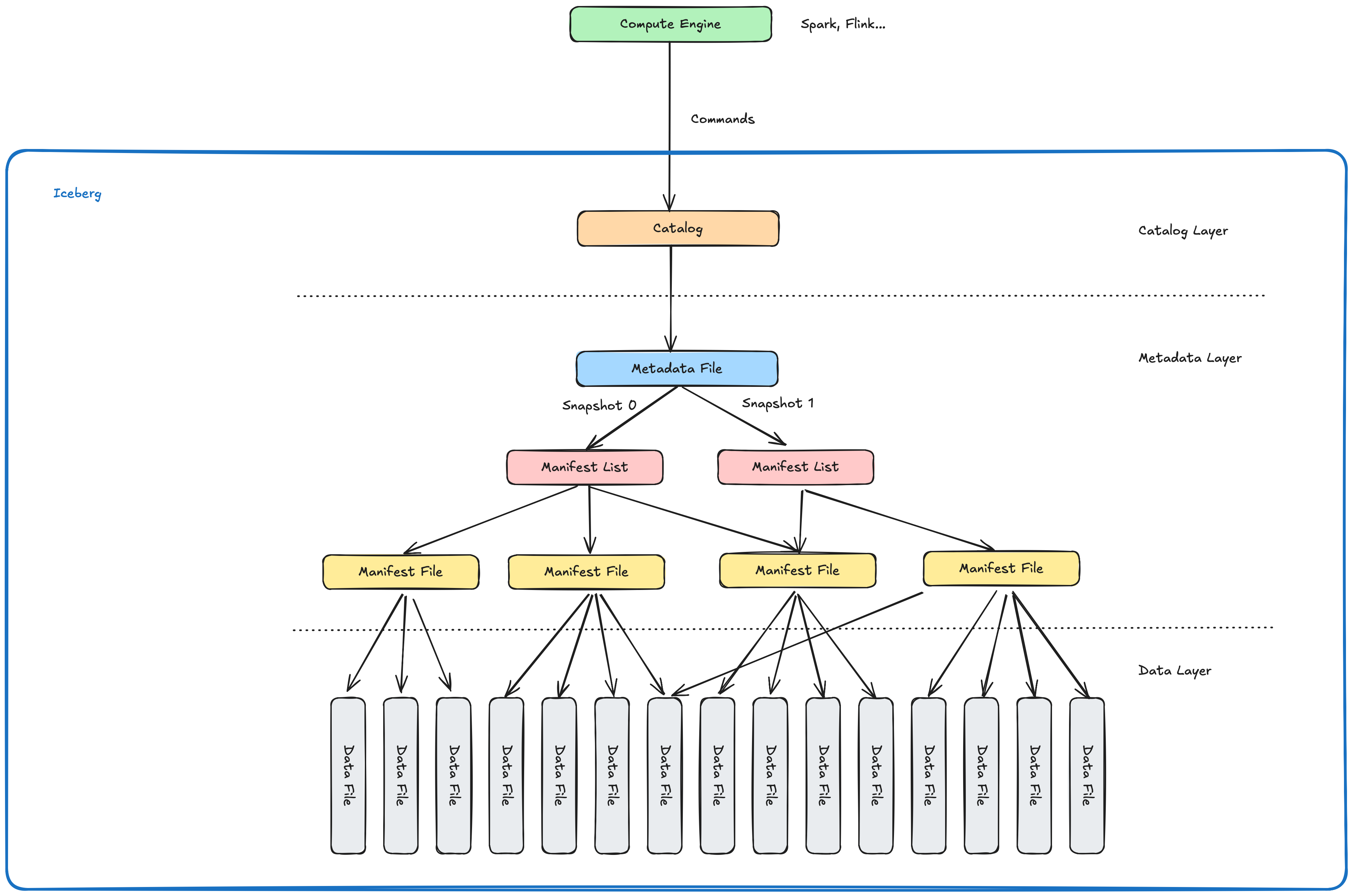A Warehouse with an organised inventory system.

Introduction
Apache Iceberg is an open-source data warehouse that is becoming a de-facto standard for data analytics. It is a columnar storage format that is optimized for analytics and provides a scalable, cost-effective, and flexible solution for data analytics. Apache Iceberg is an open standard for huge analytic tables that can be used by any processing engine (Spark, Flink, etc.)
There have been data warehouse solutions that have been around for a long time, such as Teradata, Oracle, and Teradata. However, these solutions are not always the best fit for all organizations, and they can be expensive and complex to manage.
Key features of Apache Iceberg
Columnar Storage
Columnar storage is a storage format that stores data in columns, which can be read and written in parallel. This allows for faster data processing and analysis, as well as the ability to query specific columns of data without having to read the entire dataset.
ACID Compliance
ACID (Atomicity, Consistency, Isolation, Durability) is a set of properties that ensure the integrity of data in a database. ACID compliance is important for ensuring that data is consistent and reliable, and that transactions are completed successfully.
Schema Evolution
Schema evolution is the ability to change the schema of a table without affecting the existing data. This is important for ensuring that the data warehouse can adapt to changing business needs and requirements.
Partitioning
Partitioning is the process of dividing a table into smaller, more manageable pieces. This is important for ensuring that the data warehouse can scale and manage large datasets efficiently.
Time Travel
Time travel is the ability to query historical data in a data warehouse. This is important for ensuring that the data warehouse can provide insights into past events and trends.
Query Optimization
Query optimization is the process of optimizing queries to improve performance and reduce costs. This is important for ensuring that the data warehouse can provide insights into past events and trends.